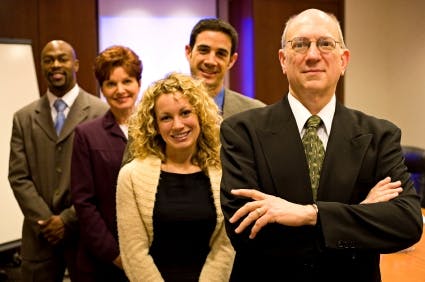Half (50 percent) of the world’s population is now under 30 years old, and those born between 1980 and 2000 will soon make up the largest segment of the U.S. workforce, reshaping the workplace because they think and are motivated differently than previous generations.
But does this mean we’re destined to generational conflict and rampant business upheaval? The answer is yes – and no.
We are facing new workplace challenges due to fresh thinking introduced by younger workers, but we always have a choice about how we deal with these developments.
Certainly each generation has different points of view, priorities, and work styles, but we have many more similarities than differences.
Focus on commonalities
Harmony in the workplace is less about how people think and more about how they feel.
People are all different – even within the same generation – so I offer some advice from Tom Peters. He said the “great secret” to achieving excellence is to:
Treat people with manifest respect, appreciation, and trust, and give them a chance to express the best in themselves and dramatically broaden their horizons.”
Every generation will welcome that approach.
Tom’s advice is worth heeding from both a people-centric and a financial perspective. Gallup estimates that U.S. companies lose $550 billion each year due to lost productivity from employees who have poor relationships with their leaders.
Your team cares less about from which generation you hail and more about how you conduct yourself as a leader.
Leadership is relational
Leadership is predicated on the ability to mobilize others to accomplish a vision, goal, or task and requires your commitment to engage and connect with others clearly and deeply; to learn how to communicate to inspire employees to make change happen.
Great leadership excites people to exceptional performance. It’s relational – it’s something you do with people, not to them – regardless of their age.
Leading is not just a matter of knowing what to do but about sharing why to do it. Accepting a leadership role is to take on the greater responsibility of making the organization’s plans for the future match with your teams’ goals and to express them in such a way that creates commitment rather than just compliance.
It’s crucial to understand what motivates each of your employees, yet research reveals that one third of leaders fail to ask employees about their needs or preferences.
Are you meeting the 6 basic needs of your employees
While individual needs will vary from person to person, according to a Corporate Executive Board (CEB) study, all employees have six basic needs in the workplace:
- Recognition;
- Autonomy/Freedom;
- Personal growth;
- Meaningful work;
- Respect;
- A sense of belonging.
The first four are rational factors and can be met through strategic corporate objectives. The last two, respect and a sense of belonging, appeal to the emotional side of people and are driven by the company’s corporate culture.
Although there are fewer emotional factors that meet employee’s basic needs, they are far more successful in improving employee engagement, retention and satisfaction than the rational factors because the CEB found emotional factors are four times more effective than rational factors in influencing employee performance and encouraging great work.
Great leaders foster an environment where every individual’s unique talents are encouraged and where feedback is both welcomed and valued.
Managing a multi-generational workforce may not be easy, but we know that most employees want to be respected and confident that their opinions matter, and that’s something a leader of any age can achieve.
The post originally appeared in a somewhat different form on OCTanner.com.
